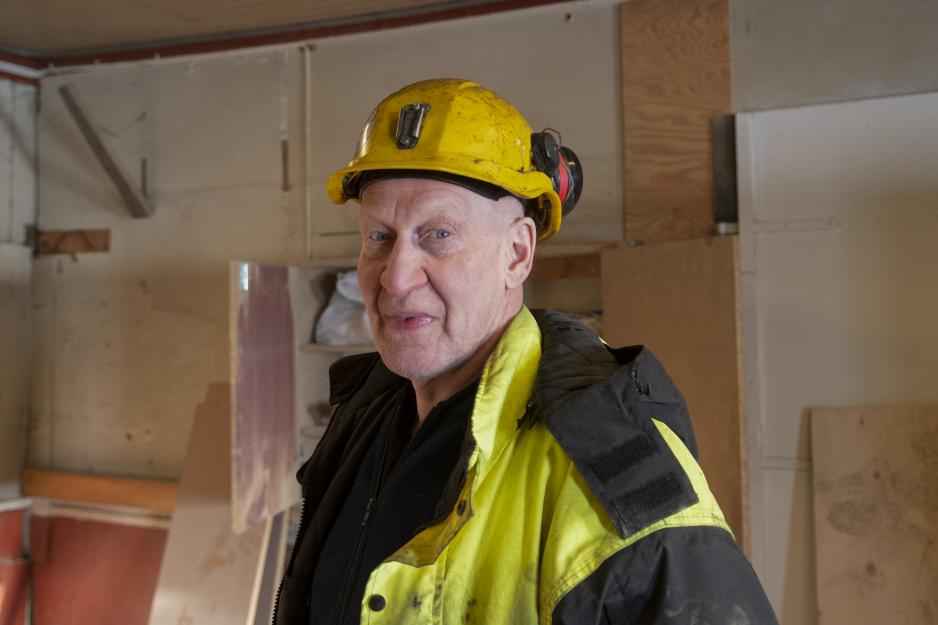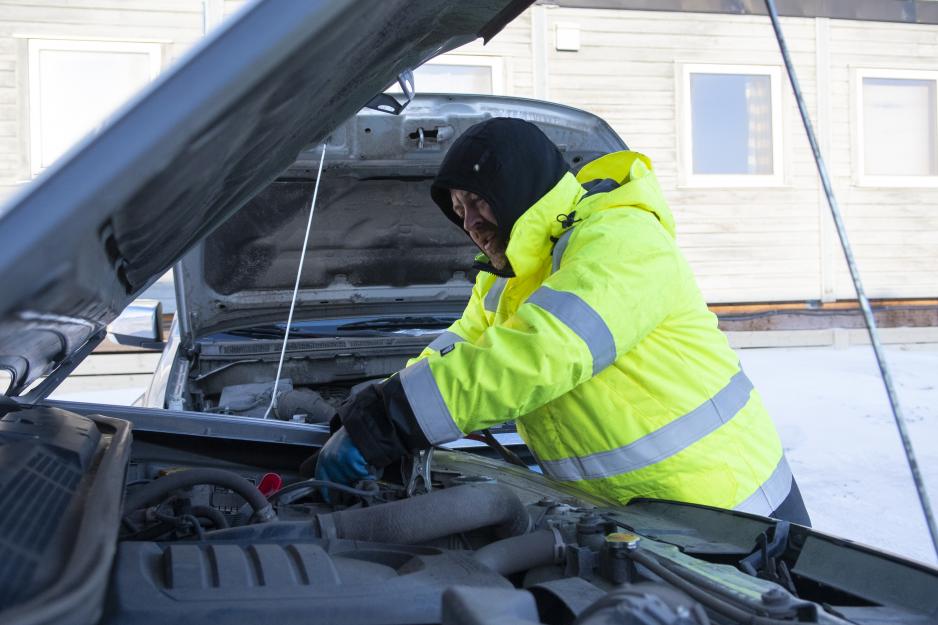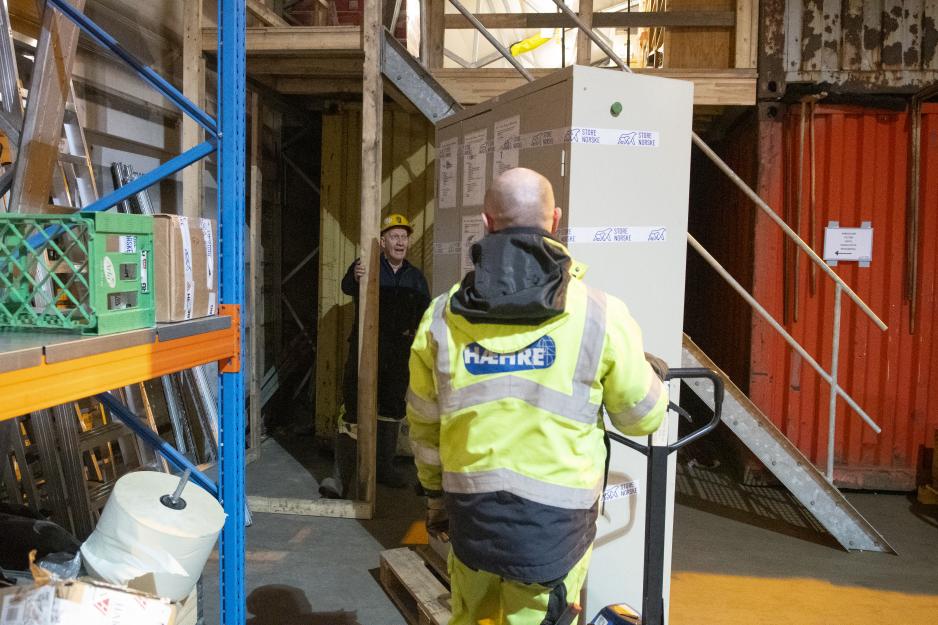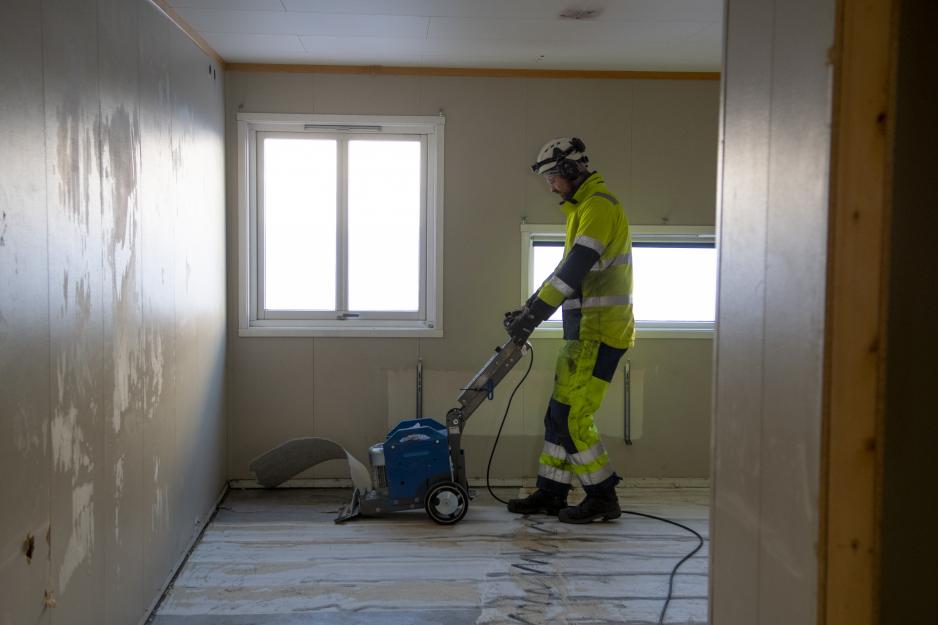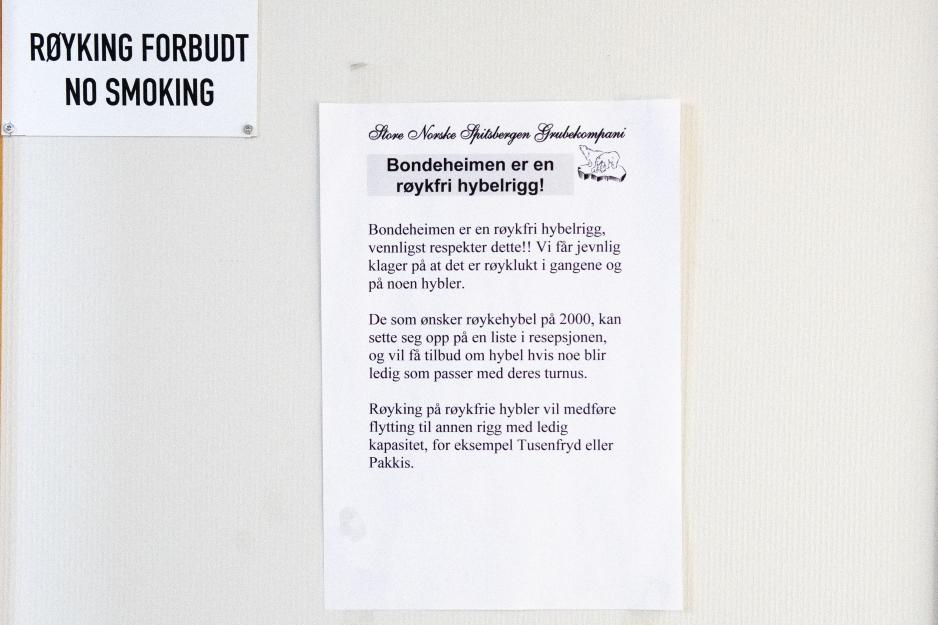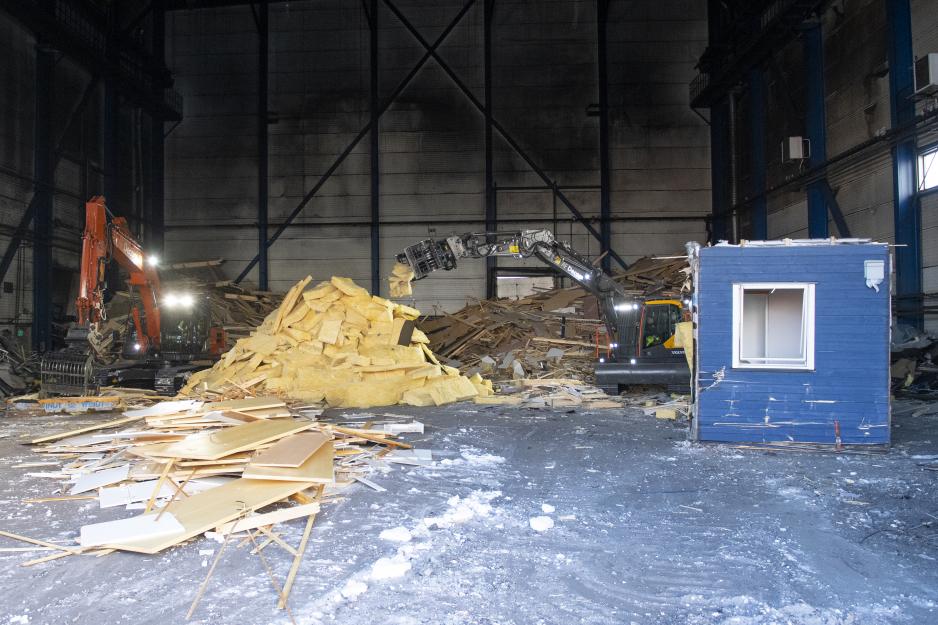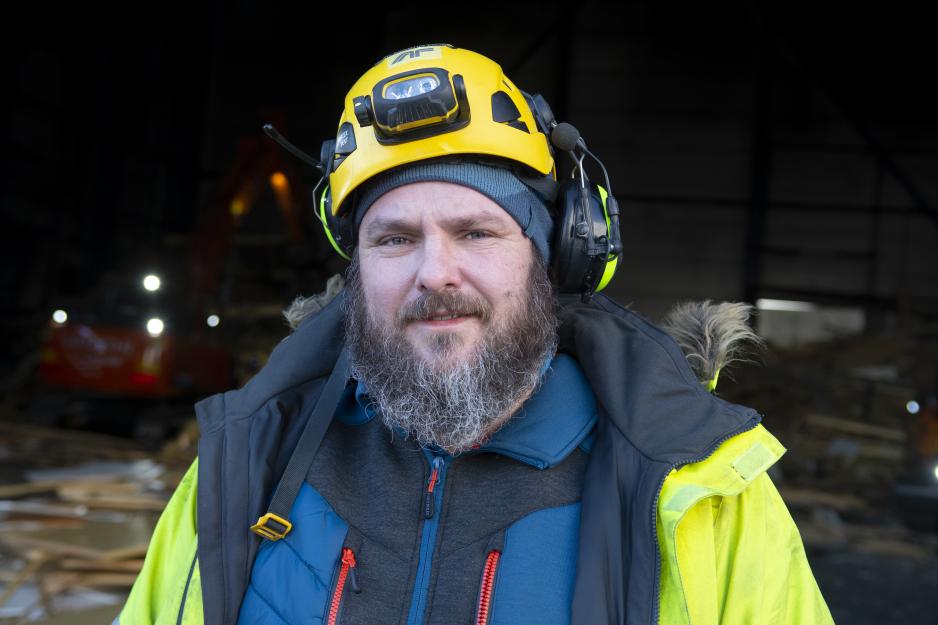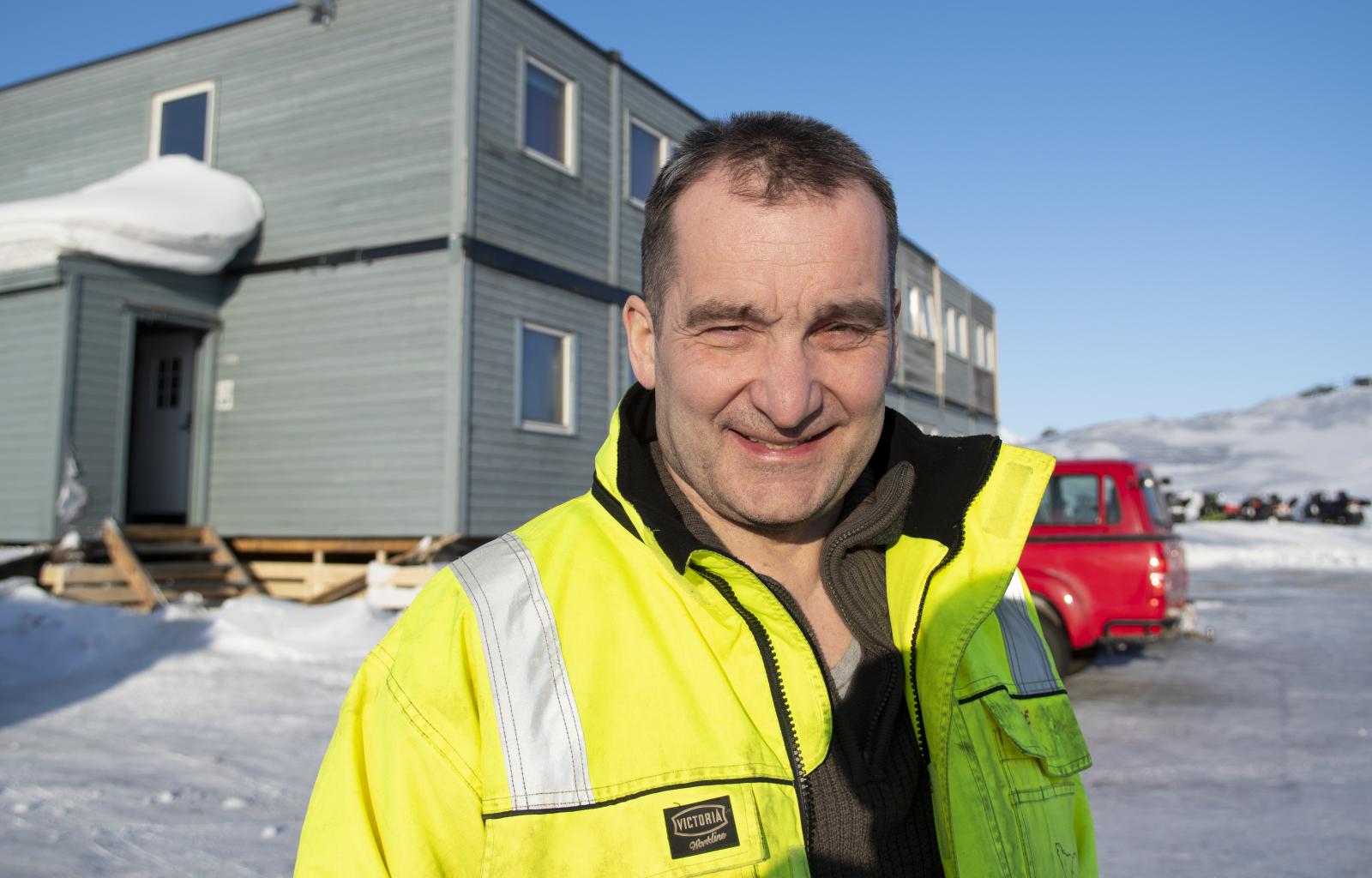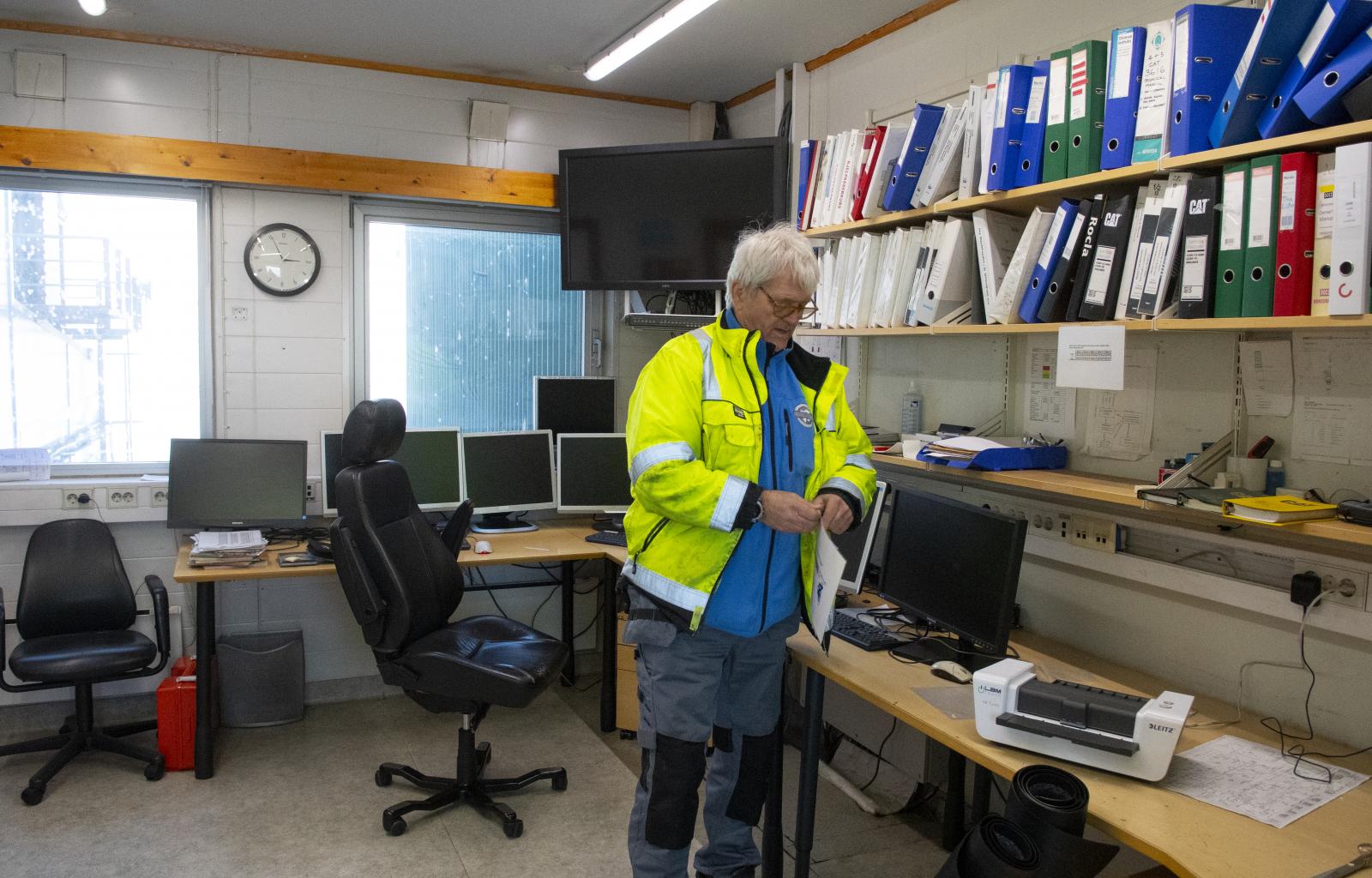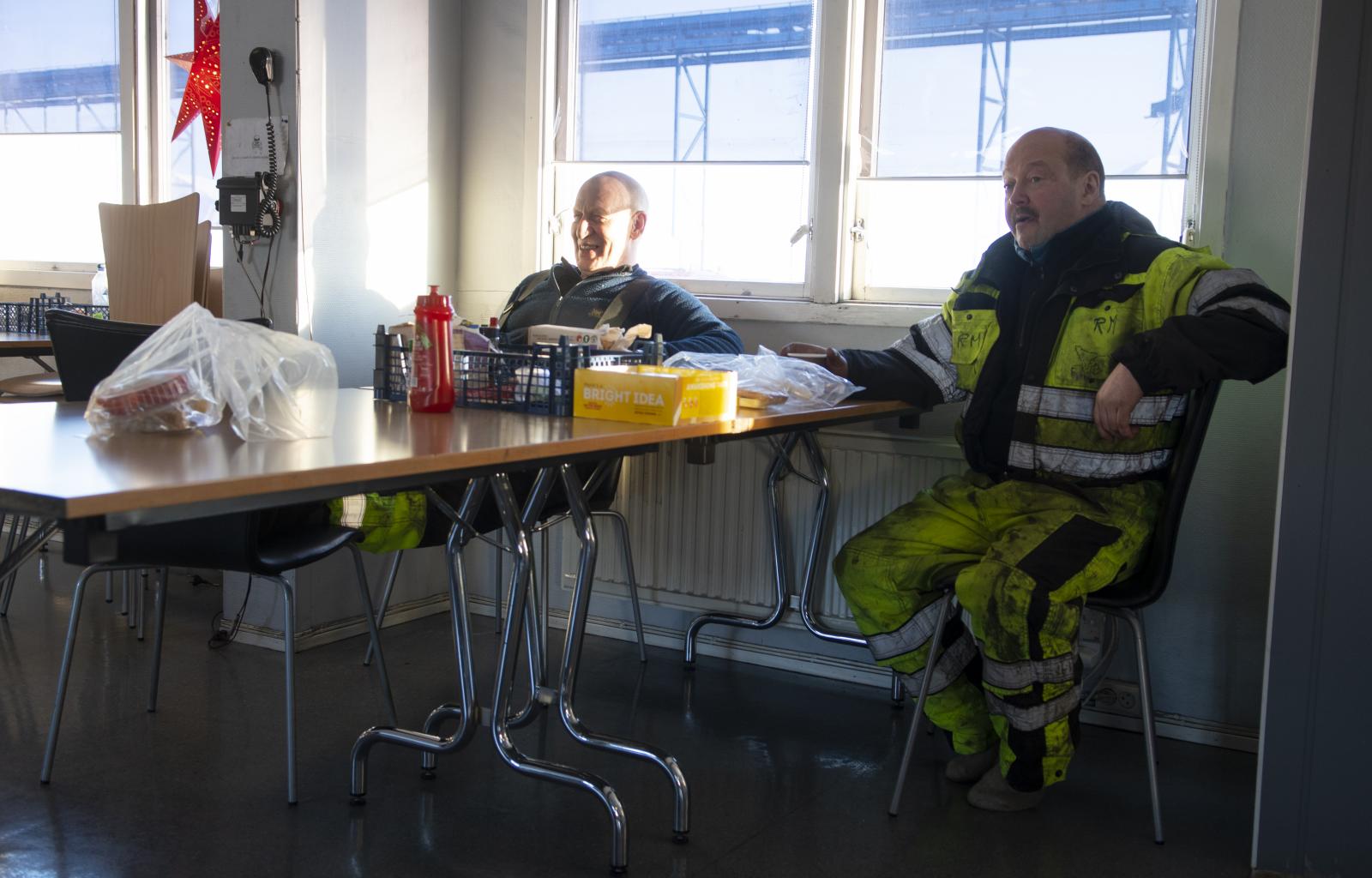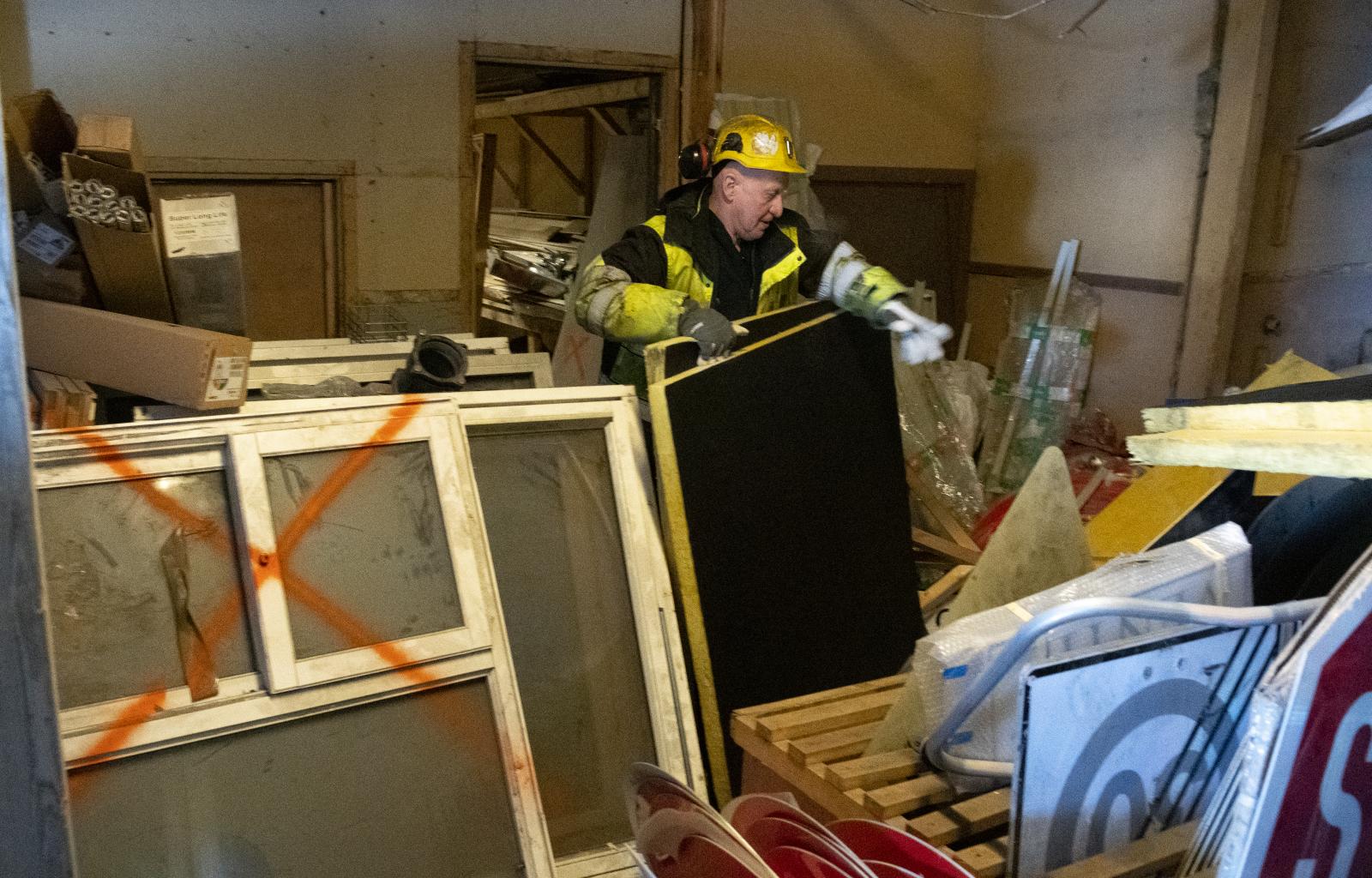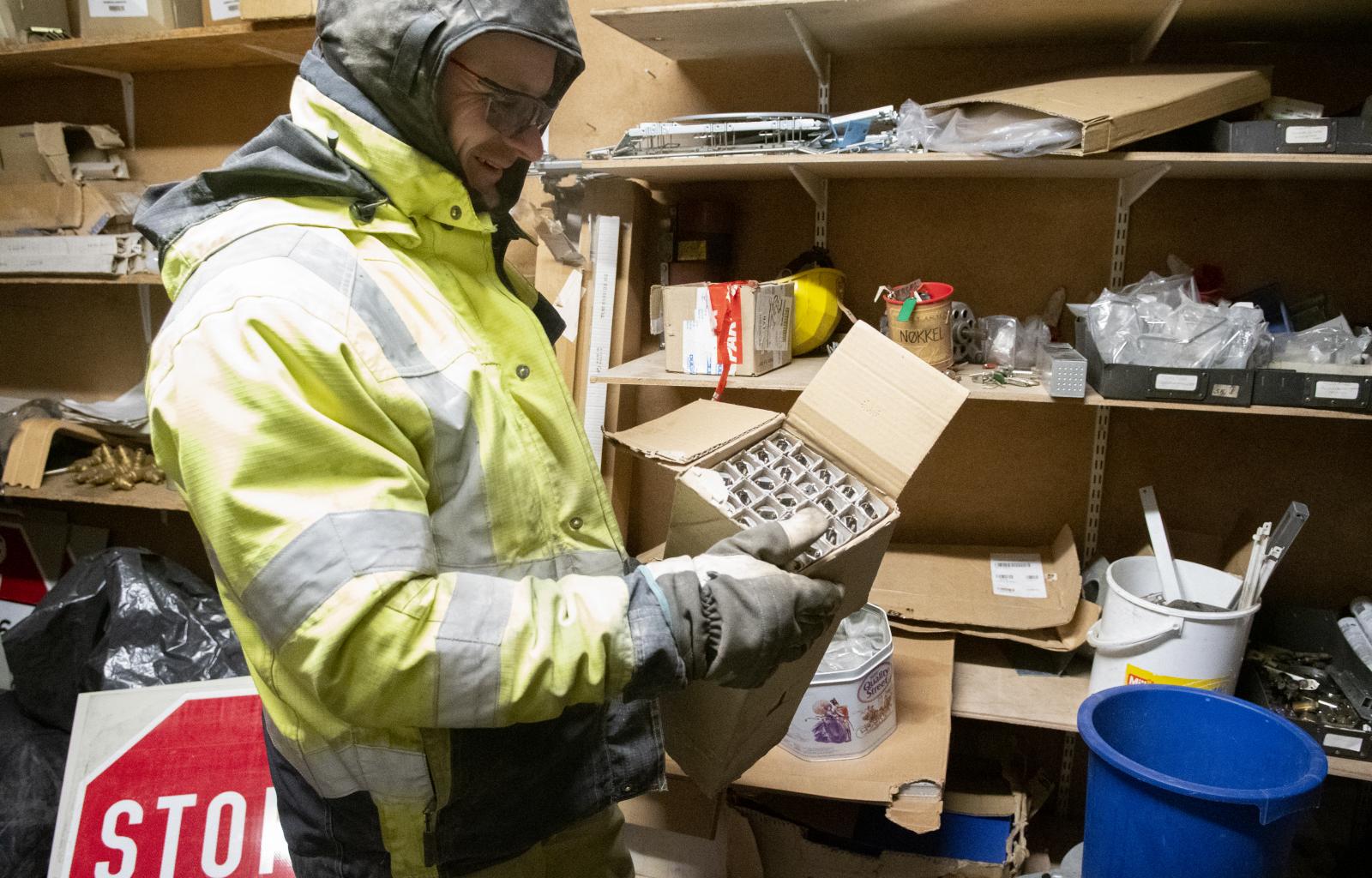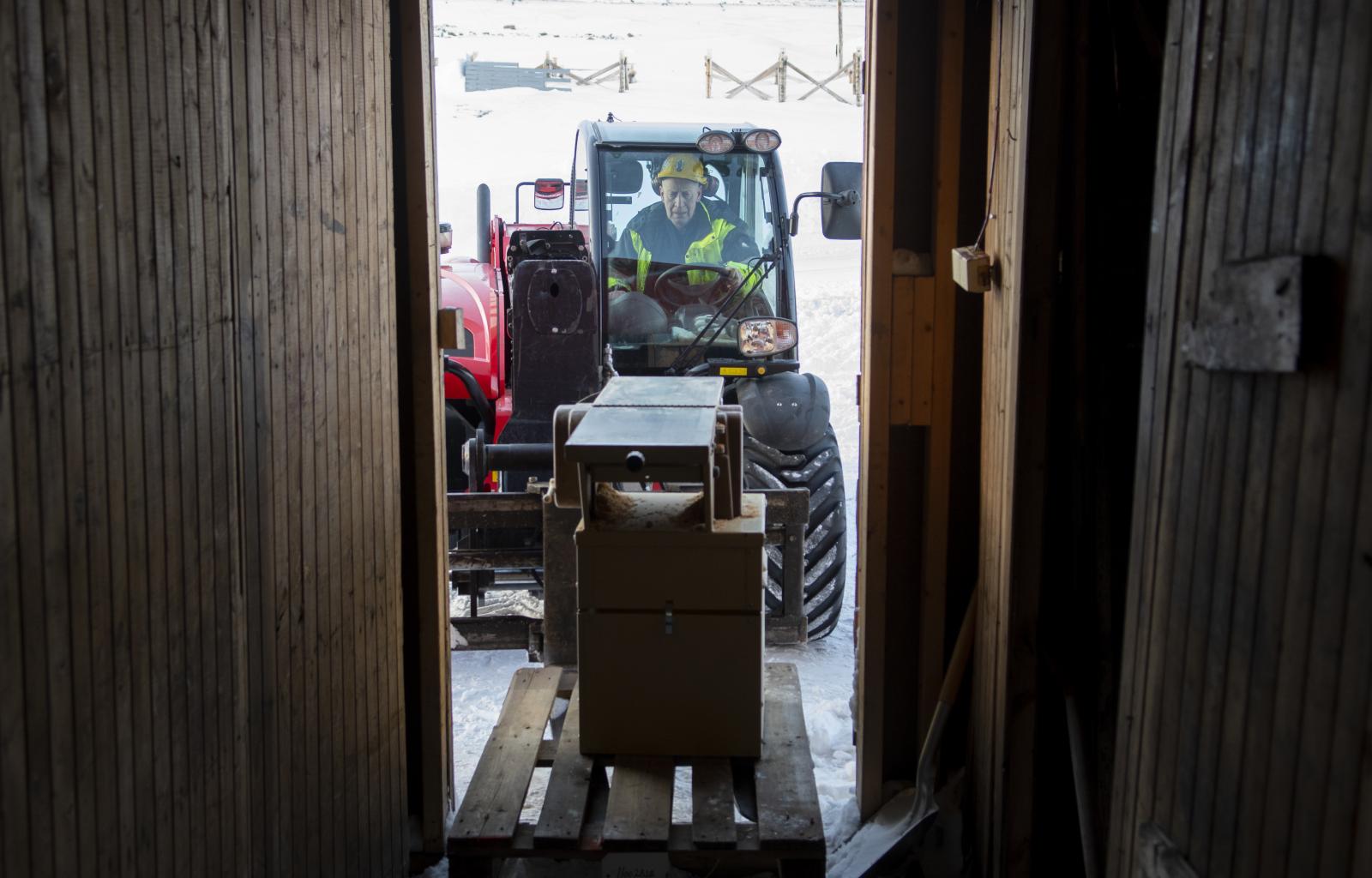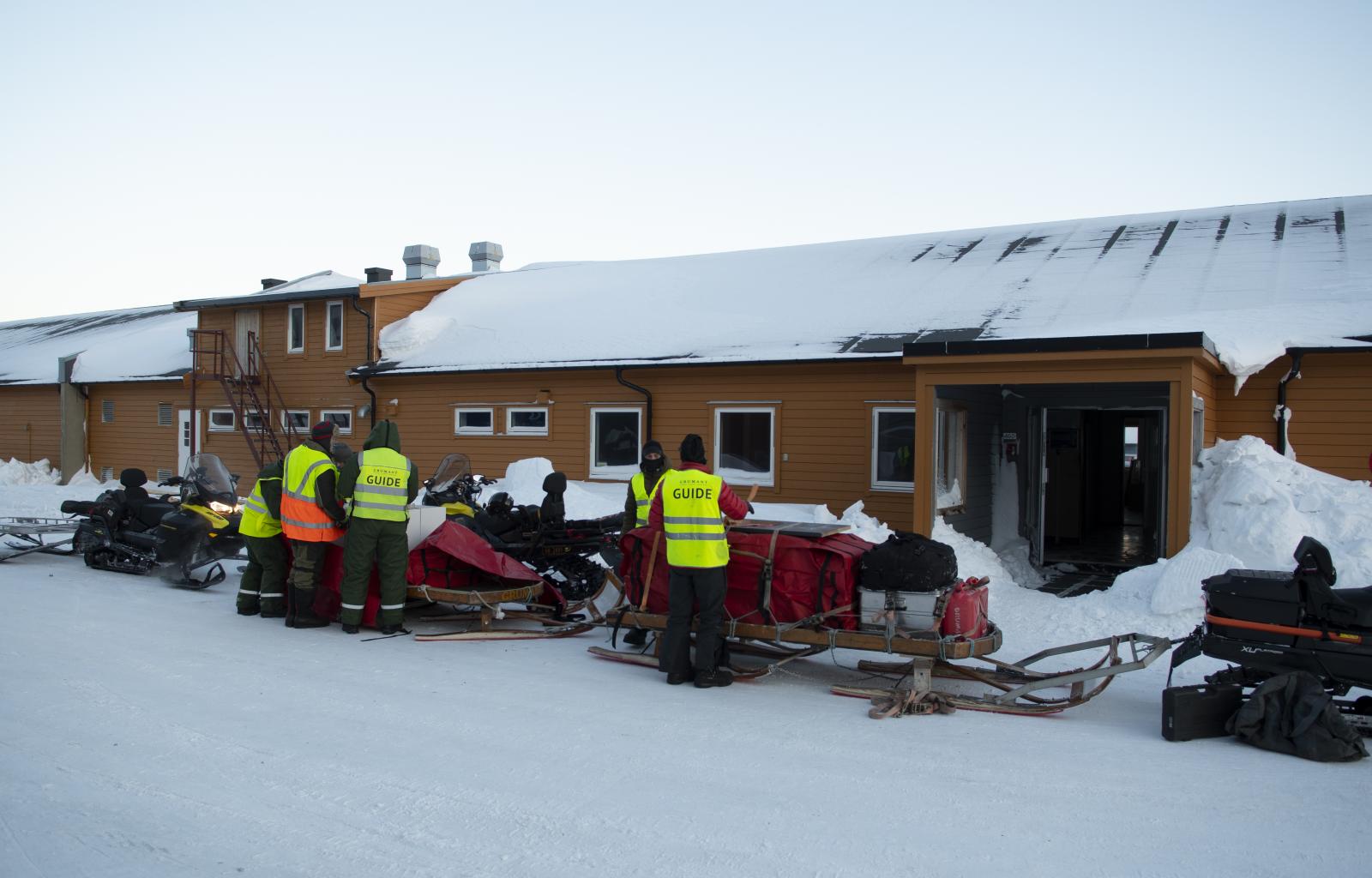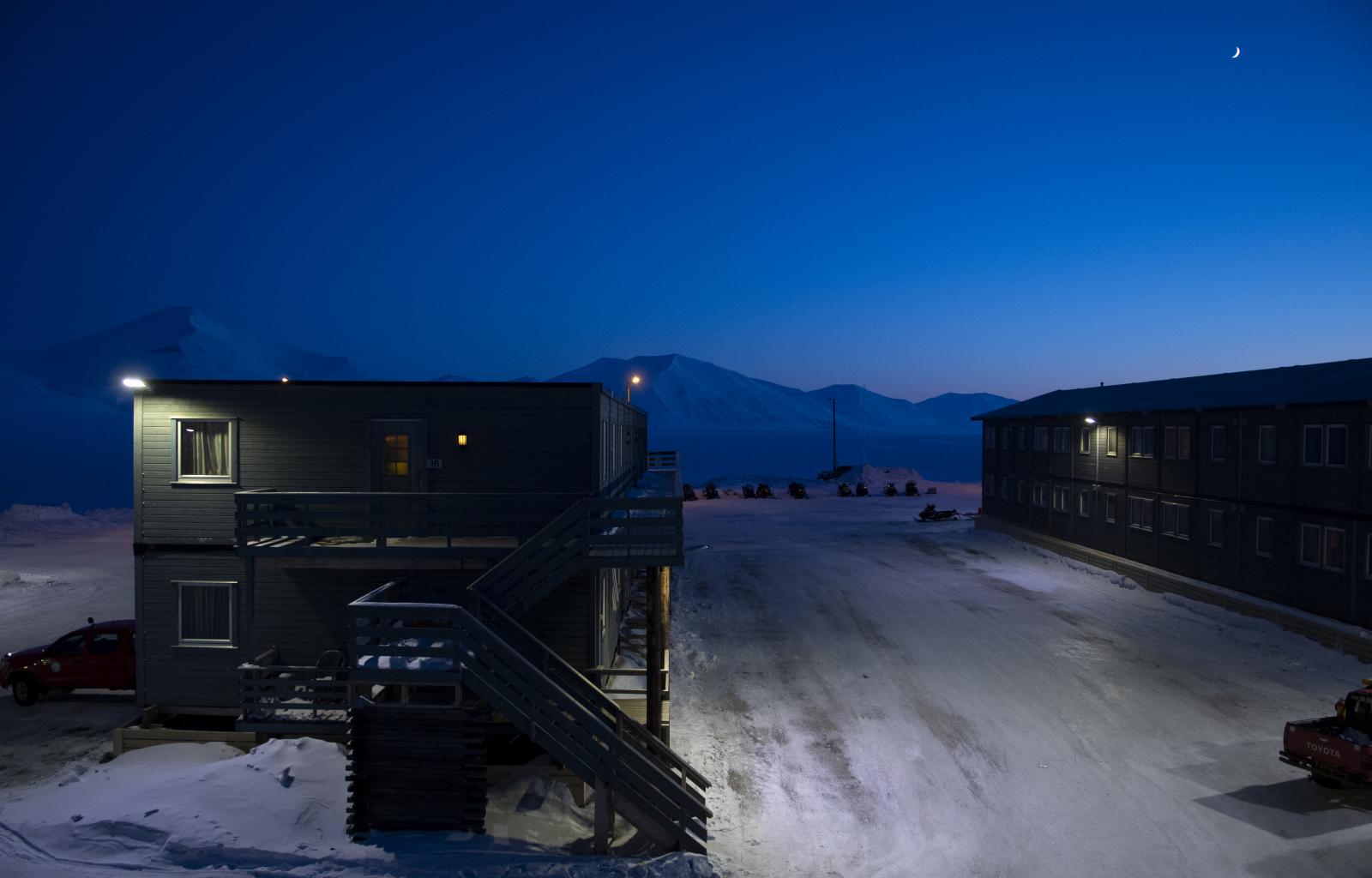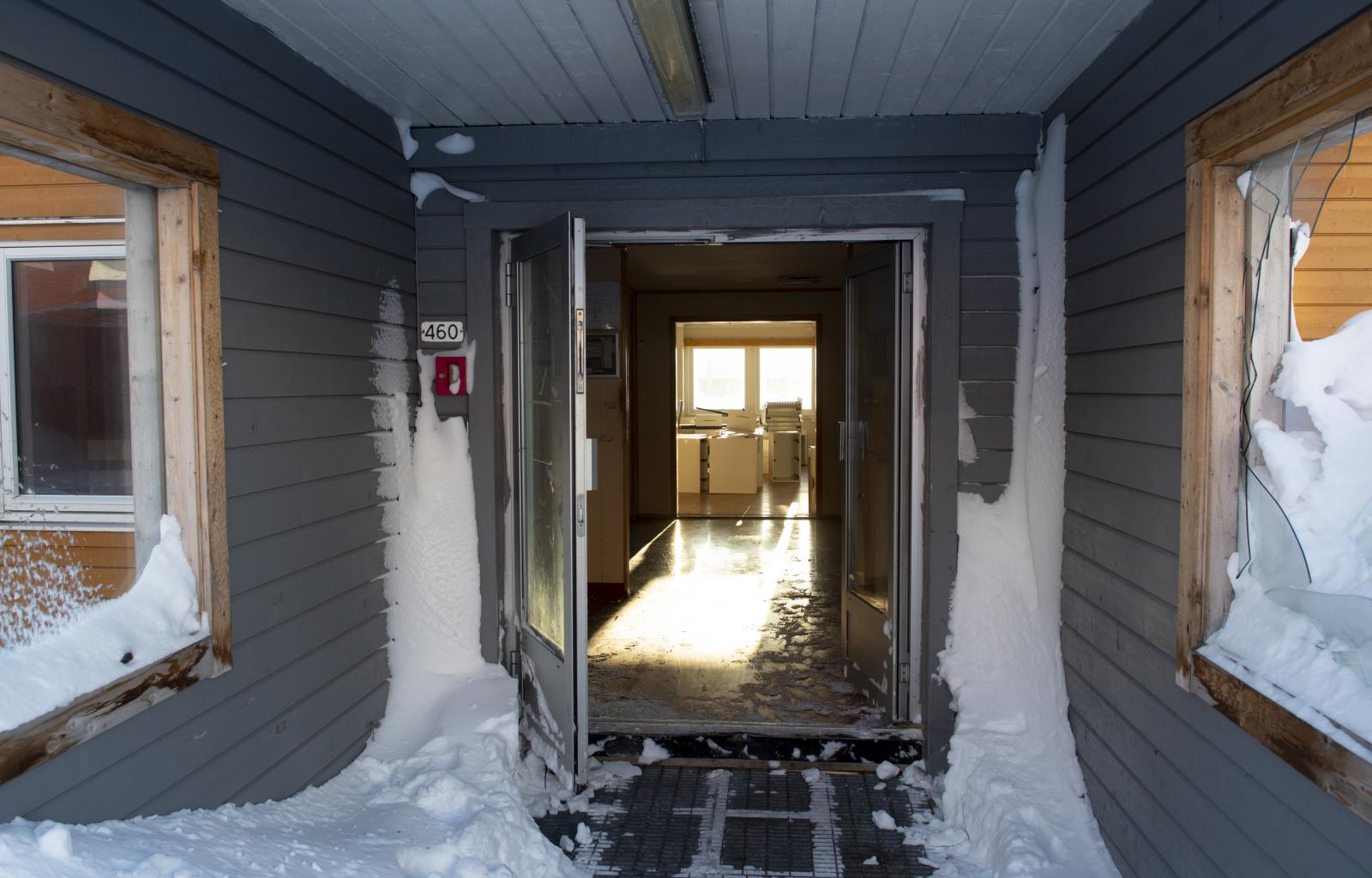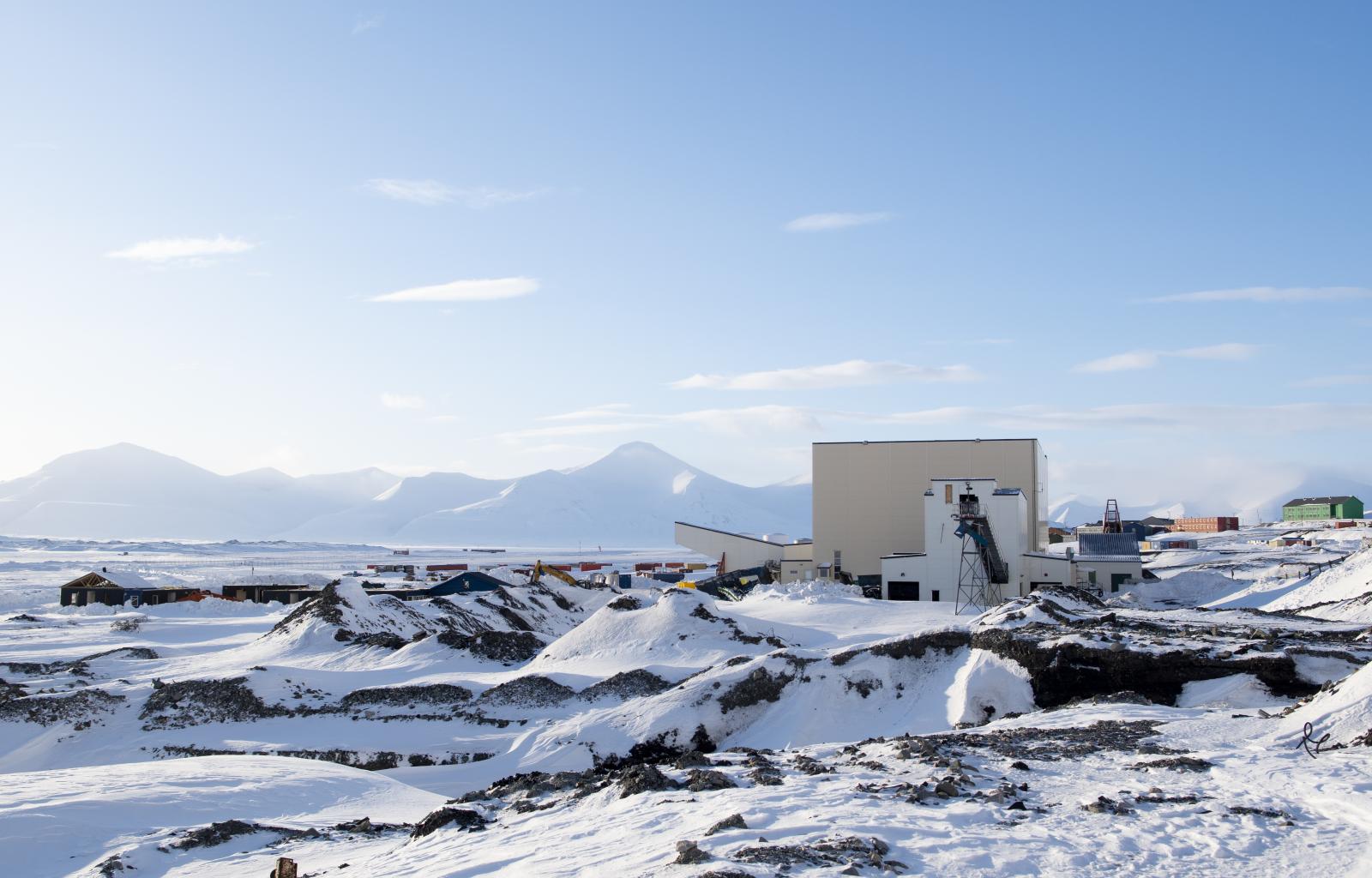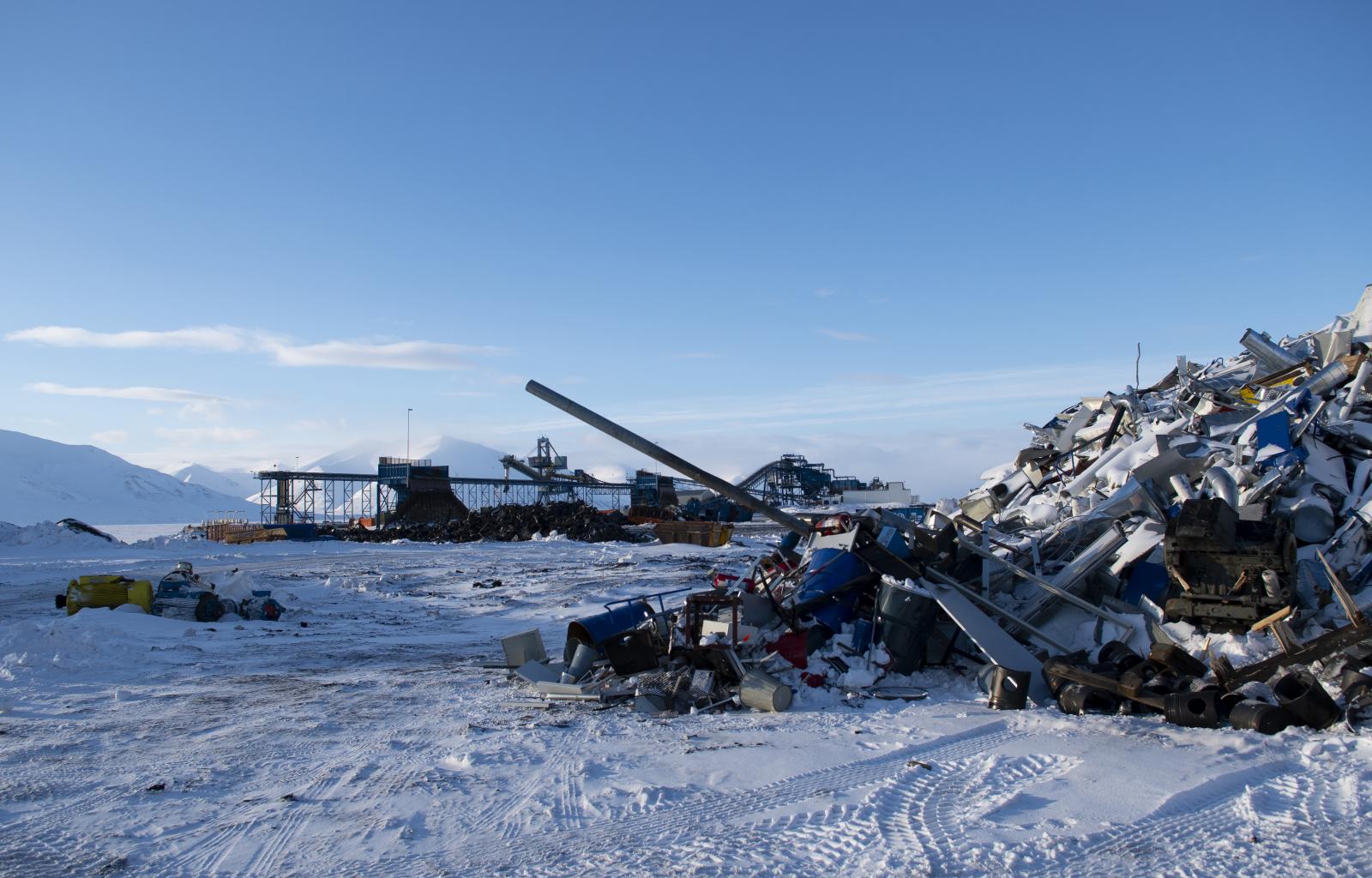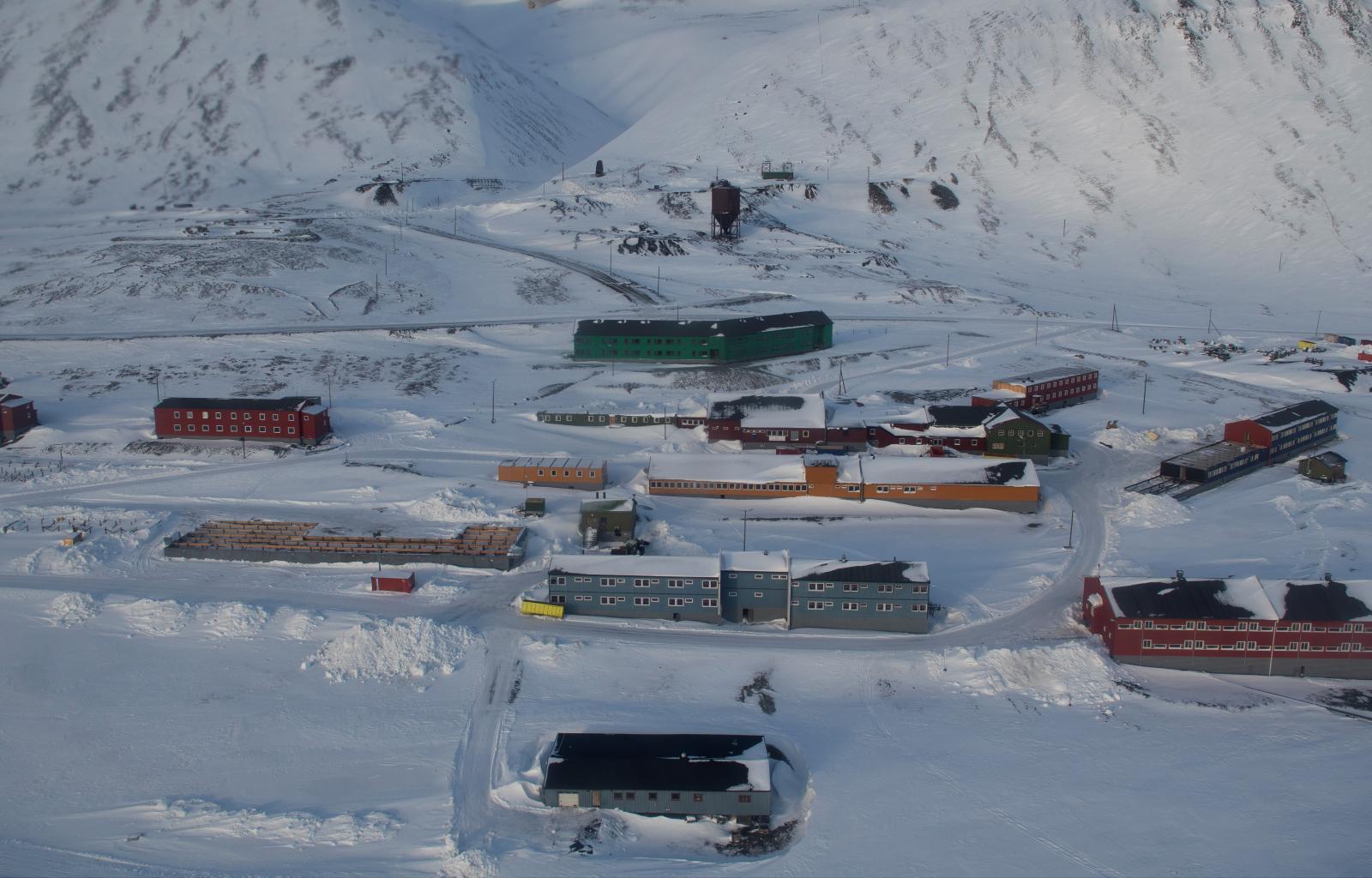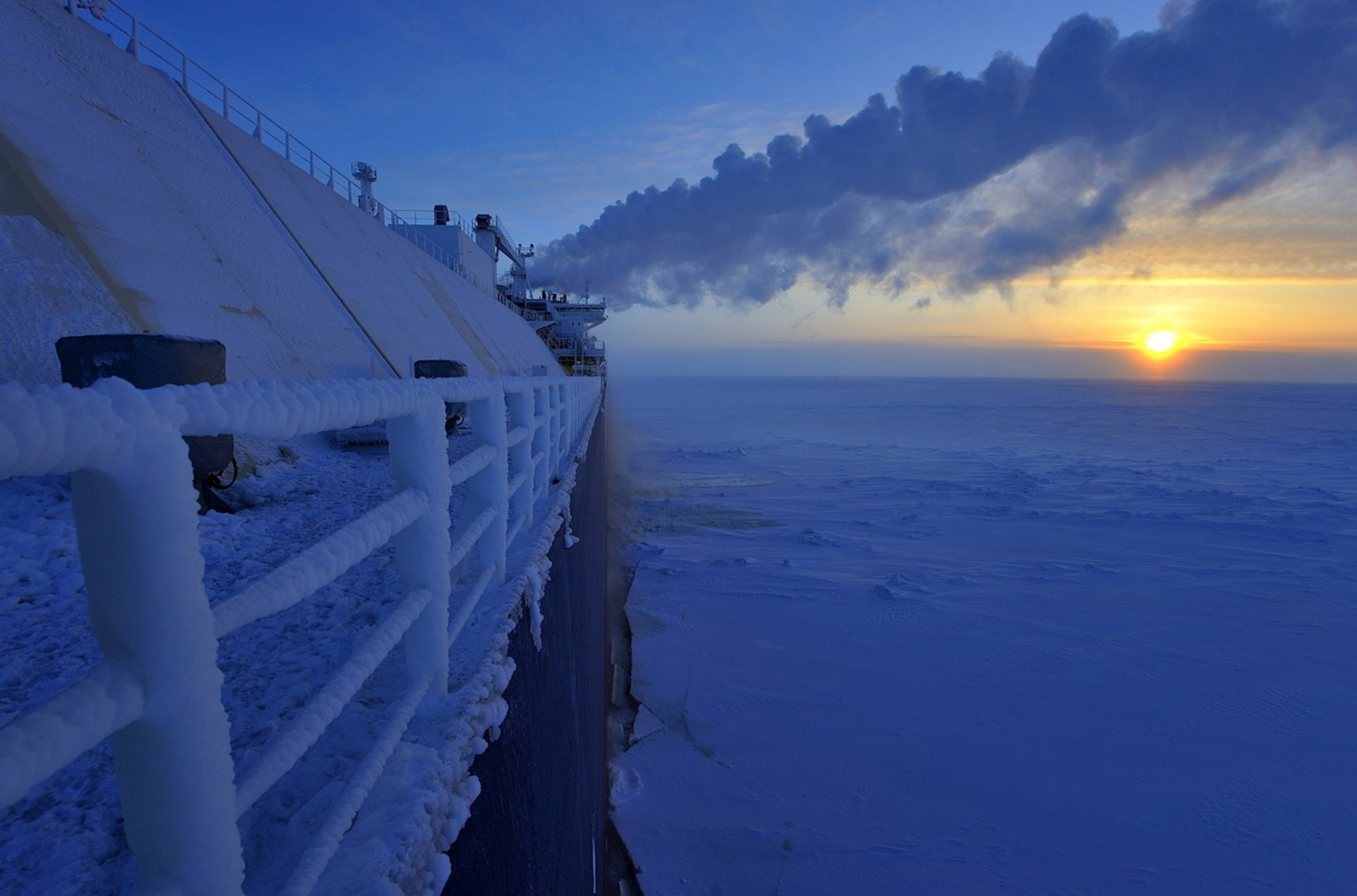Removing the Svea Community
By this summer, most of central Svea in Svalbard will be gone. Now, miners are working on clearing, sorting and throwing away more than 100 years of coalmining history.
By Line Nagell Ylvisåker
The ice still lies on the Van Mijen Fjord, a stone’s throw away from the cleanup camp at Cape Amsterdam, or Cape Goodbye, as it is often referred to. Barracks from central Svea have been re-located here to house those who are now cleaning up the mining community, in addition to a mass from the mainland further south.
There is a squeaking sound underneath the shoes, and cars with their engines running are on every corner in order to prevent full stop in the 21 sub-zero degrees Celsius.
Inside a big, blue hall working as a new storage we find former miner Kurt Even Hansen, known by the locals as “Darris”. He starts the day off with an assignment about finding a place for a locker, together with machine operator Tommy Furulund from Hæhre, the entrepreneur.
The lockers are to be located underneath the staircase, they have been told. But the locker is heavy and the staircase is low, so they cannot lift it off the pallet.
“Nah, perhaps we have to try using grease”, Darris says.
He arrived at Svalbard in 1982. Since then, he has mainly worked inside the mountains; hollowing them out in the hunt for coal. Most of the time he spent working in the mines here in Svea, the western and northern mines. Now, the mountain and all its mines are shut and he is here to clean up.
“I have accepted the fact that shut is shut, so that’s how it is”, he says and continues handling the locker.
They open the locker doors and find it filled with equipment. That fits next to the staircase, not underneath. They will have to take the corrections if and when they come.
Cape Amsterdam and the port facility as seen from above
Here, Store Norske has established a cleanup camp including accommodation buildings holding 87 beds, a galley, a small kiosk, office building, workout room, bar, storage halls, aggregates and cleansing facility for sea water.
Cleanup in process
The journalist from High North News lets Darris continue cleaning up the storage and moves on towards the center of Svea. Along the way, the car comes to a halt.
A man from the AF Decom constructor sees the warning signs blink, pulls over and offers a lift.
His name is Frode Lambertsen and his car stopped in more or less the same place just a few hours earlier this morning.
“It is strange to be back here nw. I helped construct some of this. Now there is nothing left. It is sad for those of us who know the place”, he says.
AF Decom has a contract on deconstructing most of the buildings and infrastructure in Svea. Thye brought in lots of machines and containers with the final boat that arrived in Svea before winter set in and the fjord froze. The rest is brought in from Longyearbyen with bulldozers and snow groomers.
They started bringing down the office rig in the last week of February.
Now, all that remains is a staircase, the poles, and the wooden covering.
Per Martin Dokk is the Svea plant manager for AF Decom. He puts his helmet on and shows us that the liquidation work at the Bondeheimen accommodation building is in full swing. The walls and floors are stripped. Cables, all electronic components and the coin telephone in the hallway are removed.
Inside one of the rooms, Normunds Baruss operates a machine removing the flooring.
“We leave the windows, since the machines need some teat to remove the floor covering. It also makes it more comfortable for those working here”, Dokk says.
He continues towards the building that previously contained the separation facilities, the place where rocks were separated from coal. Now, the pieces from the barrack modules are sorted here.
Along the way we run into a group from the Russian mining company Trust Arktikugol. They have been given the bowling alleys from the Svea leisure club, and Store Norske has granted permission to pick up almost whatever else they could want.
In a bend on the road, Dokk stops and points to a cross put down in the hills above the separation facilities. There were a lot of strong feelings and a lot of anger when the decision came in 2017 to shut down the Lunckefjell mine and leave its coal be, shut down the Svea North mine, remove the entire Svea community and all races of mining from after 1946.
“But we are okay. Nobody blames us for the shutting down of this community. It is not something we have decided, we have just been given the job”, he says.
Inside the former separation facility, two diggers work on picking apart barrack modules and sorting the pieces. One pile of wood, one of insulation materials, one with doors, one with metals.
The Lunckefjell aggregates have been relocated to Cape Amsterdam
They provide electrical power for the deconstruction camp, and the heat is used to operate a water cleansing facility for sea water.
20 years of Svea power
Even though the March cold is freezing outside, it is warm and comfy inside the temporary deconstruction camp at Cape Goodbye. Machine operator Stig Barstad looks after two new generators humming just past the office barracks.
They were brought down from the Lunckefjell facility where they were meant to be reserve source in case the main supply from the Svea plant were to fail.
The engines were only tested. The Lunckefjell mine costing NOK 1.2 billion never came into full operation. Last autumn, the plant was fully liquidated. All buildings, all the masses, and the road with road lights across the Martha Glacier are gone.
The old main power plant is on the seaside of the Svea air stripe. It was the largest diesel-fueled energy plant in the country. Barstad came to repair an engine, as one of the machine operators was ill. Store Norske then asked him if he would stay until the operator had recovered. This summer, that will be 20 years ago.
The Bondeheimen accommodation building is fully stripped
Soon, the barracks will be torn apart and into pieces, one by one.
Svea’s cold heart
Barstad shows us the way into Svea’s cold heart. The pumping house for the remote heating has been deconstructed. Now, the facility is to be emptied of diesel, oil and coolants. Each of the four engines takes some 1,800 liters of oil and 2,000 liters of coolant.
When all is emptied and cleared, the roof of the station will be lifted off and the engines lifted out. After that, it will be “plug and play” for anyone taking over.
“It is sad to tear down what I have helped build, but that is how all things go. Everything comes to an end, and a rope has two.”
The western part of the power plant includes two yellow engines. They arrived in 2001 from a Michelin factory in France. The two others are newer and located in the other end of the building. To get there, we have to go through a corridor with concrete floors.
“It was always slippery here. Once, I painted and poured sand into the paint”, Barstad says and uses his shoe to demonstrate that there is solid friction now.
He moves on to the first floor, where the office, break room and control room are – or were. Shoes leave black marks on the linoleum floors. The machine operator hesitates.
“I have never walked here with shoes before, it was always clean” he says, before stepping on towards the break room and the control room, where screens are still lined up one next to the other.
Barstad had complete overview. He tears down a laminated sheet from a shelf, showing calculations of the effects on the engines.
“I once made this to explain to the others. There is a lot of history here”, he says.
The machine operator has found working in the mining community very rewarding. He has met a lot of people, has handled many different tasks and taken on a lot of challenges.
“I would probably choose the same over again, given the chance. The sense of community was great, and also being in Svalbard, which is probably Norway’s best recreation spot”, he says.
Machine Operator Stig Barstad has worked on the Svea power plant for 20 years this summer
“It mostly went well. One explosion, two fires, but nothing that could not be fixed”, he says.
Hoping for new life
The machine operators are dismantling the power plant slowly and carefully. Barstad hopes there will be buyers soon. Perhaps in Longyearbyen, perhaps in Syria. Everything is bombed to pieces there, so somebody has to have a need for it.
“But I don’t know, that is someone else’s job”, he says.
Everything in Svea is to go. A lot is discarded, some is sold, some is donated, some will be melted and recycled. The government refers to Svea as one of Norway’s largest environmental projects.
“Many people are planning. I believe that if everything has to happen fast, you may not necessarily get the best solutions. But then there is the question about what operating this community for a long period of time costs in an environmental perspective. How large emissions will come just from being here? You have to think along several strands of thought”, Barstad says.
Here, in the green machine operator cabin, with a wood oven and polar bear visits through the bathroom window, Barstad lived for 15 years
The power station is just below, on the other side of the airfield. The yellow machine operator cabin is to be relocated and used as a leisure cabin for Store Norske staff.
Discarding a lot
Darris has put the locker where he thinks it should go and sits with his feed up on a chair in the break room at the harbor. Stuffing a dose of snuff underneath the lip, he talks with the guys about living pigs delivered in Longyearbyen as food, and the barn that was previously located in Barentsburg.
Next to him is Roger Mathisen, who was tasked with putting up masts for technical installations in the cleanup camp.
“Now I will put up a mast, and then in 1-2-3, it will be taken down again too”, he says.
Most of the buildings in Svea are emptied and ready for the AF Decom machines to arrive. Only two buildings remain: the carpentry workshop and the old sports hall.
“The Russians have been allowed to collect all they want now. They are amongst others picking up a large separation wall from the sports hall”, Mathisen says.
“It is a good thing that it is put to use”, says Tommy Furulund, machine operator at Hæhre.
“So we don’t have to throw it away”, Darris adds.
He says there are three brand new doors in the carpentry workshop.
Wasn’t there someone looking for a door to a cabin?, they ask themselves. Yes, but that was an front door, they realise.
“What has been re-used in town are four boards for a floating bath dub”, Darris says.
He refers to the sauna LPO Architects build as part of a circular economy project. They tried to initiate a project in which as much as possible of Svea construction masses were put to use in Longyearbyen.
“If buildings are to be re-used in Longyearbyen, it will be more expensive to move them from Svea than to build brand new”, Darris says.
Though buildings are not the only items to be removed from Svea. The buildings have also been filled with furniture and equipment. Longyearbyen Local Council has collected some shelves. The airplane association will take over some tools. Some will be auctioned off on a national auction page.
“A lot is thrown away. We cannot think about the value of it. We have to think geography. If we were on the mainland, most of it would be sold. But here, freight costs often exceed the items’ value”, Mathisen says.
Darris and Tommy Furulund leave the warmth of the barracks and drive to the carpentry workshop to clean up, the car pennant swinging in the wind as they drive.
Give a f*
"Don´t f* turn of this radio". Curious to learn what this radio will report when Svea is liquidated and abandoned.
Time is money
On this particular day, the man holding the title “Project Manager, Environmenal Project” has rushed over on a snowmobile from Longyearbyen. Gudmund Løvli does not know exactly how much waste will be shipped out from Svea, but he estimates somewhere in the range of 50-100 thousand tons.
The barrack buildings now cleared and ready for dismantling are not likely to be re-used in Longyearbyen, Løvli says.
“It is perhaps a good thing, as much of it is old too. It is not state-of-the-art when it comes to insulation. The woodworks will probably be sent off to be burned, but the heat will be exploited”, he says.
Løvli says AF Decom is required to sort 95 of the liquidation waste according to source. Burning through which heat is exploited is counted as part of these percentages.
Two halls have been moved to Longyearbyen. A third one is to become an art center on the seaside area in town, if buyers manage to make it through all the red tape. In addition, the stacker from Svea, a transport band to bring coal out from the mine, is to become a new walking bridge across the Longyear River.
Løvlig had believed more of the cabin people would have come to Svea to collect materials and, for instance, solid front doors, but the Russians have come and picked up a lot.
Much of the mining equipment is sold, but not all of it. There have been interested buyers, but there are not a lot of potential buyers, the environmental project manager says. Not many mines are opening around the world, and in addition there was Covid-19 creating insecurity in the market.
Some of the electrical equipment has gone to Mine 7 in Longyearbyen, but most of it has been sorted for recycling.
“Does the pace with which the decommissioning is taking place represent a challenge?”
“There are different decisionmakers and budgets in this project. If we had waited, it would give huge benefits for society as a whole. It costs more than NOK 100 million annually to keep Svea warm, have water, airport, port and the whole shebang. It has to go fast, since the costs are so high”, Løvli says.
“Would it be better for the environment if you had more time?”
“That is a good question. I am not sure. It is a cost-benefit issue. If we had waited two years on wise decisions in areas such as recycling, we would perhaps have had a larger footprint from keeping Svea warm using diesel oil and freighting goods back and forth with boats and planes. I believe it is best for the environment that we liquidate Svea fast”, he responds.
Though Løvli believes that one should investigate in hindsight to calculate the environmental footprint coming from the methods used, perhaps through a master’s thesis.
Perhaps the answer is not given. What would that calculation look like if one had just burned it all down on-site?
This is where Darris and Furulund bring the items that are to be kept from the carpentry workshop
The kayaks and the other stuff in the open container will go to Longyearbyen.
Airport for one more year
Today, it seems the airport in Svea will shut down in August next year. Store Norske has not decided how people are to commute then. Perhaps with helicopter, perhaps by boat.
“I believe next winter may be the last winter with people in Svea. It is a weird thought”, Løvli says.
Some time this year, Store Norske is to select entrepreneur for the final part of the reversal project. Then, roads, airport, port facilities and the Cape Goodbye cleanup cam are to be liquidated. In addition, the terrain is to be returned as much as possible to how it originally was. By 2024, the process should be finished.
After that, nature is to take over and natural processes to run heir course.
Løvli worked for Store Norske in the 1991-92 period, mapping the Svea North mine. During 2003-2006, he worked for Leonard Nilsen & Sons in Svea. He was also in charge of the company’s Svea activities from 2006 to 2009, having his office in Longyeabyen.
“I’ve been there from the cradle to the grave. I was one of those holding the iron chains when the mine was shut. That was min final assignment in the northern Svea mine itself”, he says.
“What is it like, leading the liquidation process in what you have helped construct?”
“It is very strange, but that decision was made in 2017. We have to be able to rejoice over the project, turn our heads. I have, so now I am happy that we are making progress, that we reach our goals. All we can do, is follow up decisions that have been made. It may sound strange, but I am fine with it.”
Homesickness
It appears one of the carpenters has been homesick at some point, or perhaps he just did not sleep well in the bunk bed.
30 zone
While cleanup worker Darris gets a telescope truck to transport heavy items, Tommy Furulund enters the carpentry workshop. Here are still wooden blocks that can be used to carve cups, planks. Coveralls hang on the wall, the saws still stand, ready to be used.
“I think about life that was here, the social unity. There were great leisure opportunities, with bowling, shooting and model planes”, he says.
He has only been here for one year and thinks this is an exciting project to be part of. He used to be in the tunnel industry but wanted to try something new. Furulund lifts the wooden blocks, looks at worktops and on the shelves.
Darris comes in and starts looking over everything that is found inside the red worn building.
“There are a lot of signs here. What should we do with them? I don’t know if it will be possible to put any of these to use” he says, lifting a bunch of 30-zone speed limit signs.
“They have to be approved if they were to be used, with reflexes and so on”, Furulund says.
“Yeah, I guess they are”, Darris says.
Other signs read “Snow deposits” and “Halt: Passing only permitted following explicit permission from the tower”.
On the door to one of the rooms next door, red spray instructions speak a clear language:
“Throw away everything in here.”
Svea’s history
In 1917, the Swedes started mining the Svea mine. Operations were cancelled in 1925. By then, some 400,000 tons of coal had been extracted.
Store Norske acquired the plant facilities in 1934 for NOK 1 million.
Svea had a staff of 400 at its peak.
The last coal came out from Svea North on 8 April 2016. By then, a total of 32 tons had been extracted.
In 2017, the Norwegian authorities decided to liquidate Svea and mining operations there. All traces of human activity dating back until 1946 are to be cleared away to the extent possible. Cultural heritage predating 1946 may remain. That applies a.o. to four buildings; the salon, the wine cellar, the old dog pen and a transformation tower.
Source: The Svalbard Governor and Store Norske
The Environmental Project:
Is funded with NOK 2.5 billion through the state budget.
All infrastructure and waste are to be removed, including roads, buildings, airport, and the port. Masses are to be deposed so that the glacier surface and mountainside appear unaffected. Pollution in the ground should be removed and secured.
Phase 1 of the cleanup in Lunckefjell and across the Martha Glacier was completed in the fall of 2020.
This article was originally published in Norwegian and has been translated by HNN's Elisabeth Bergquist.


